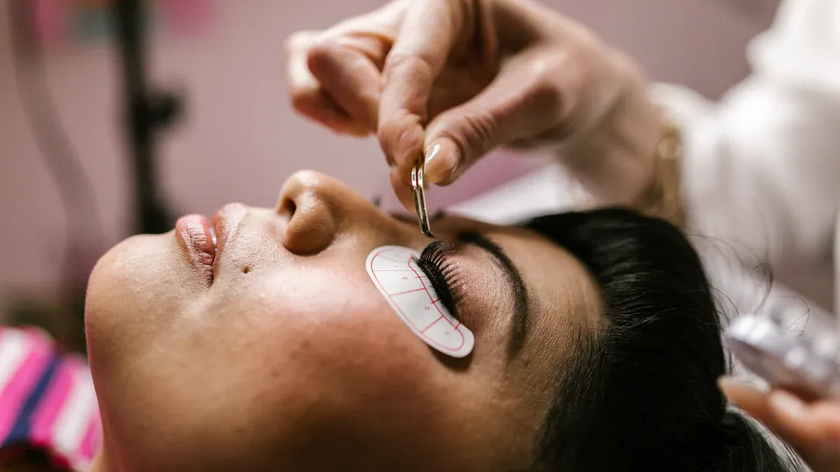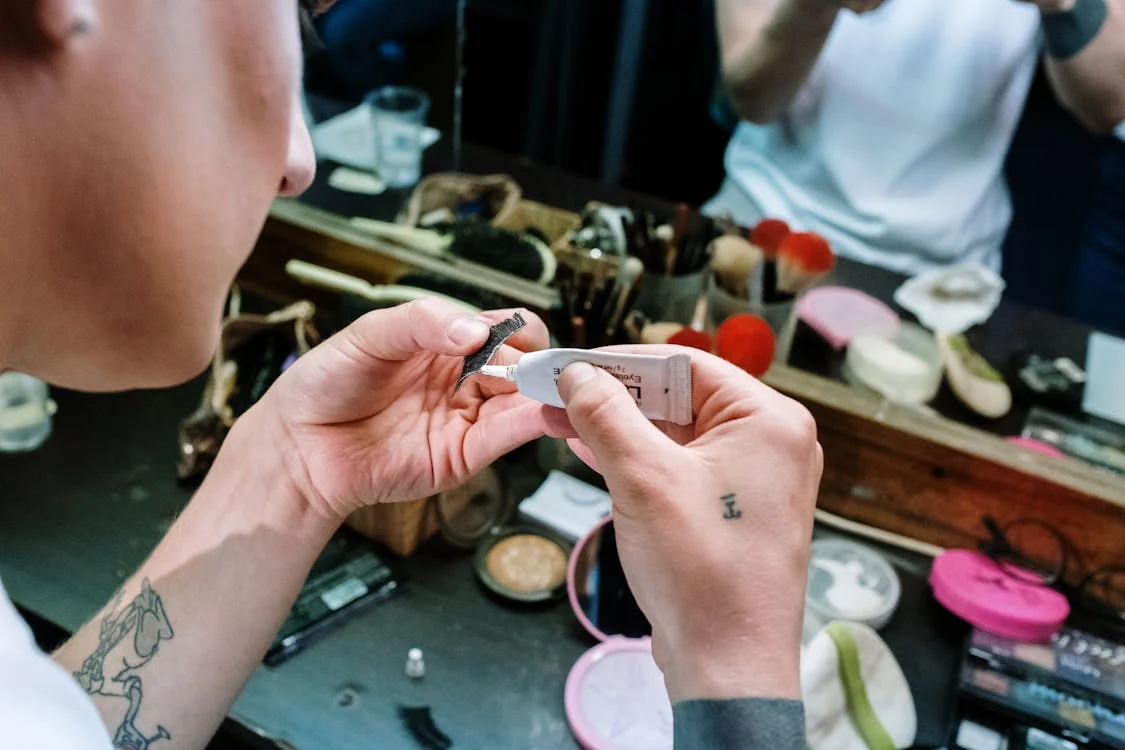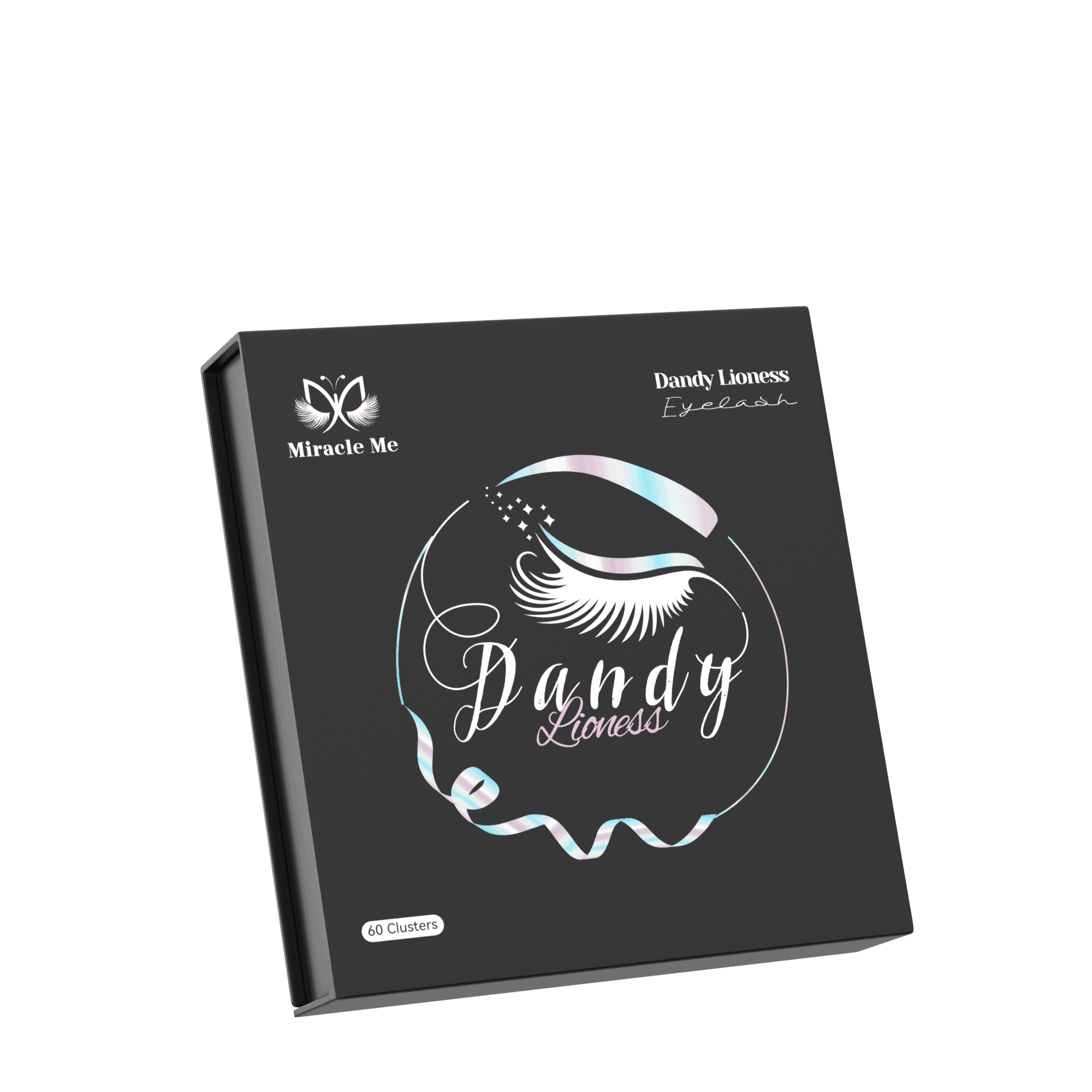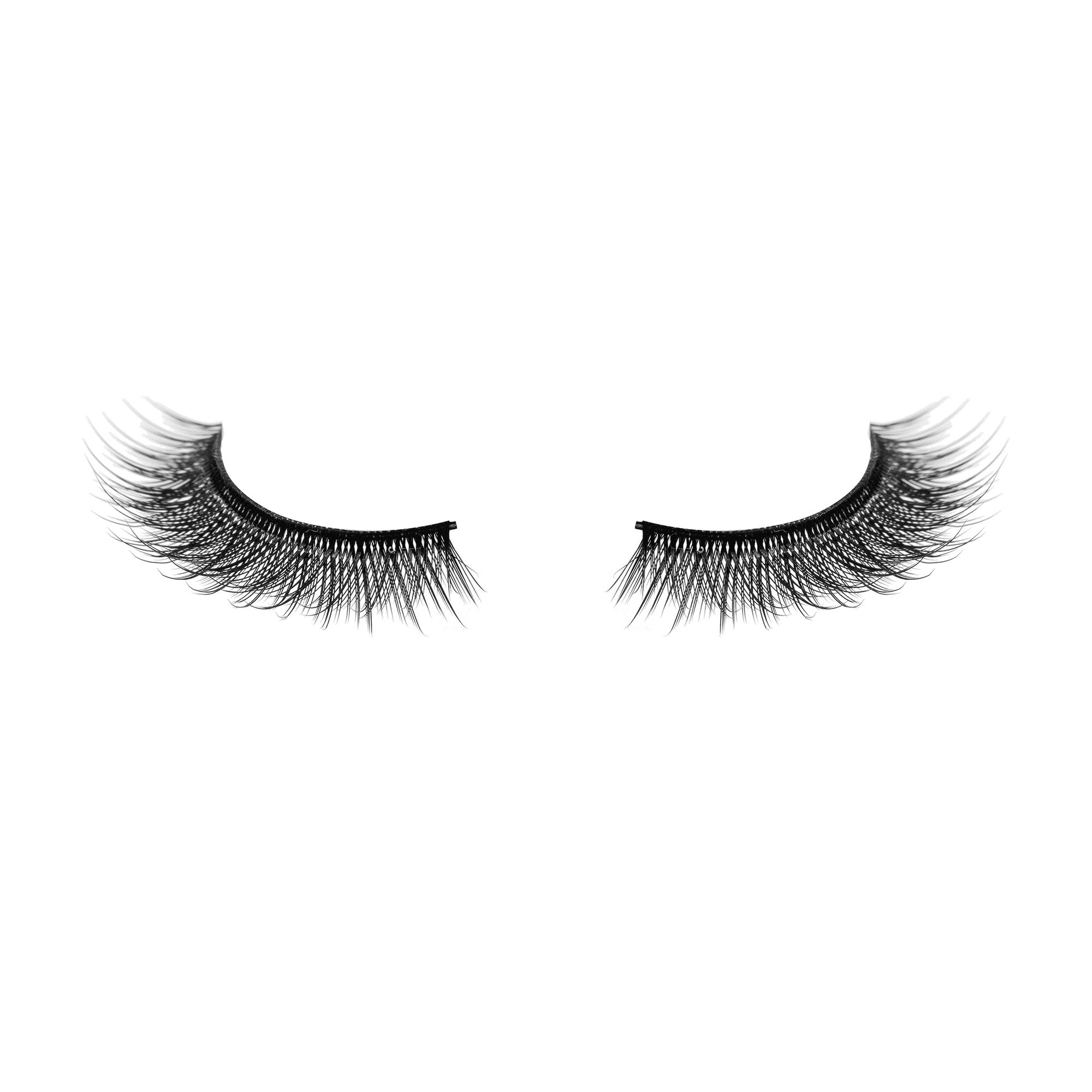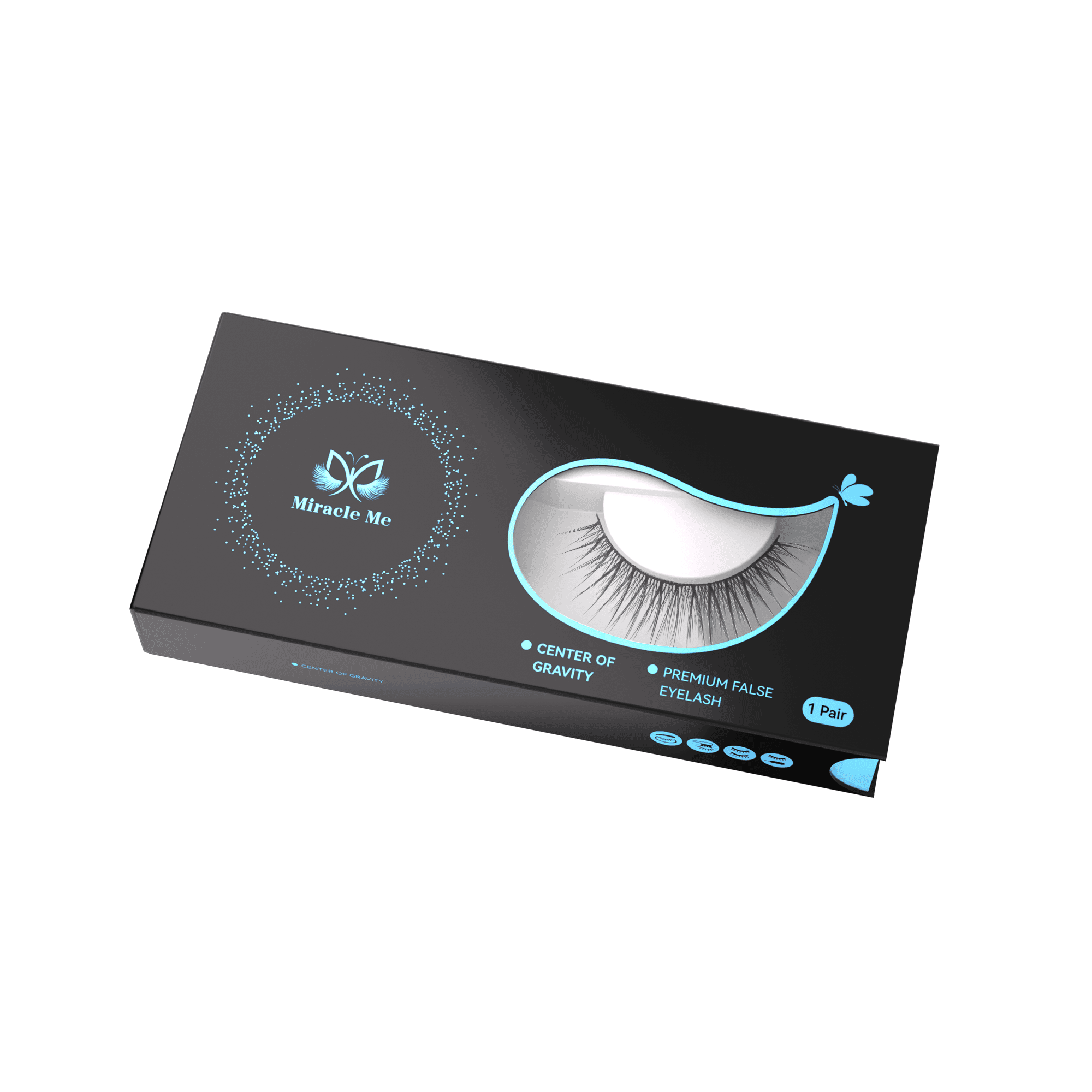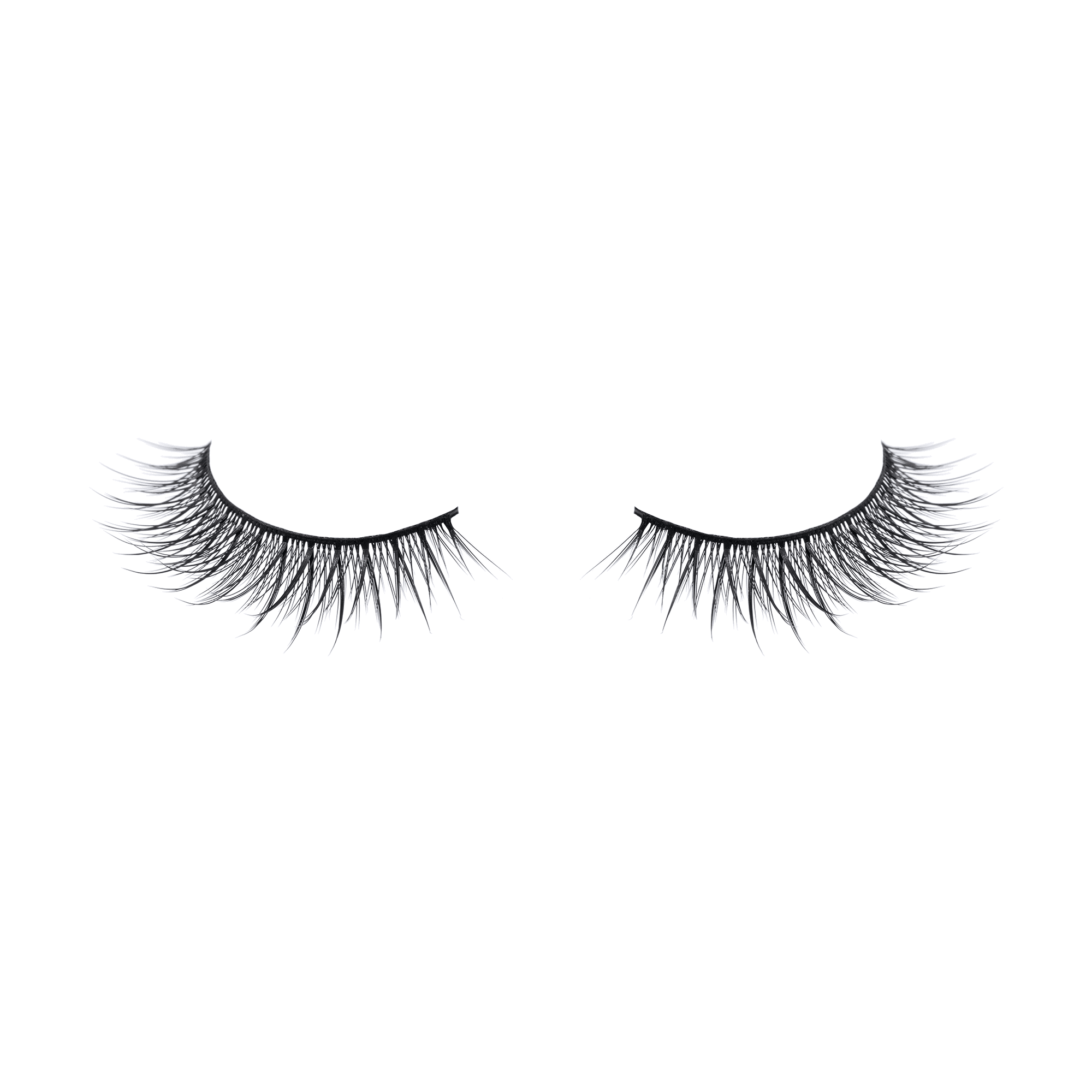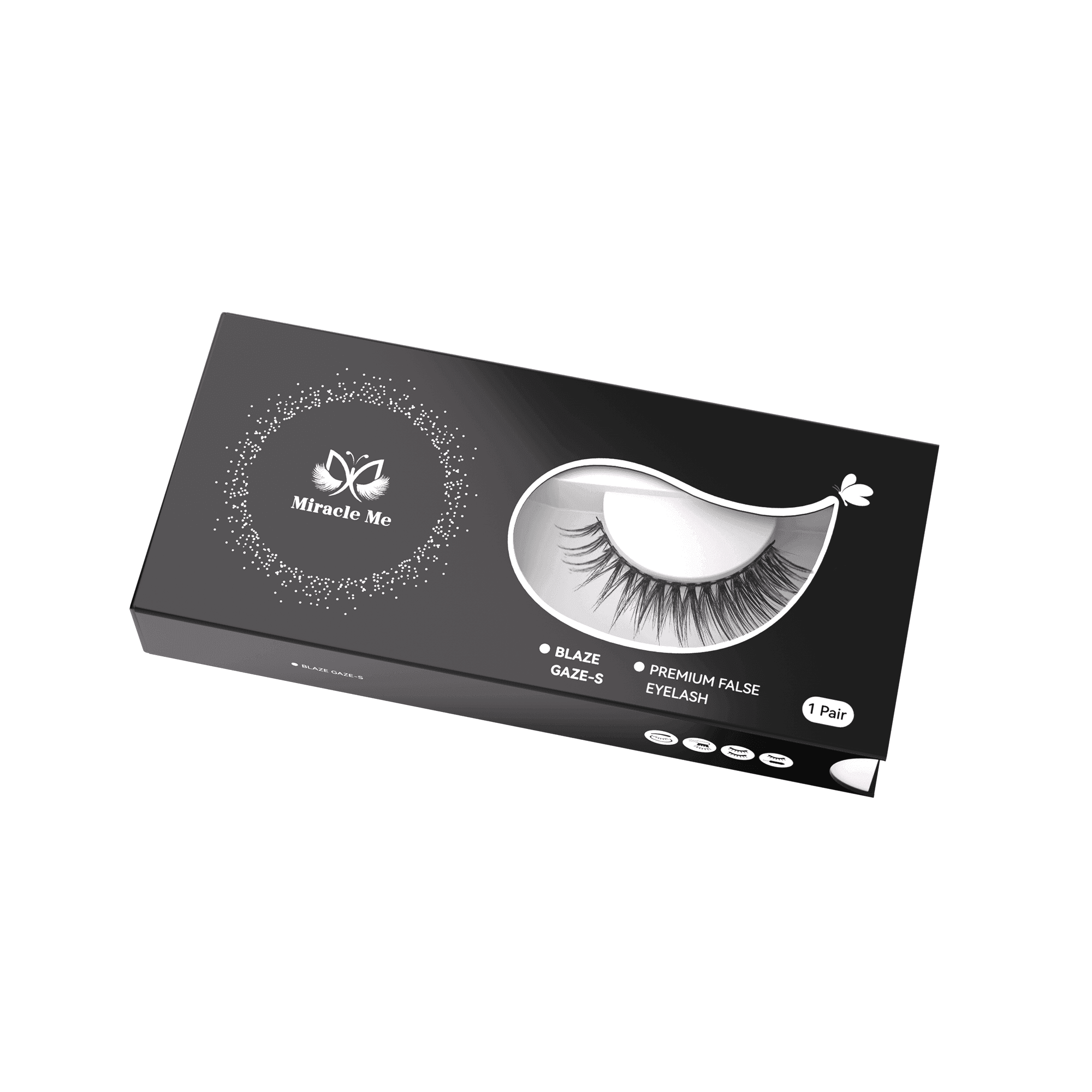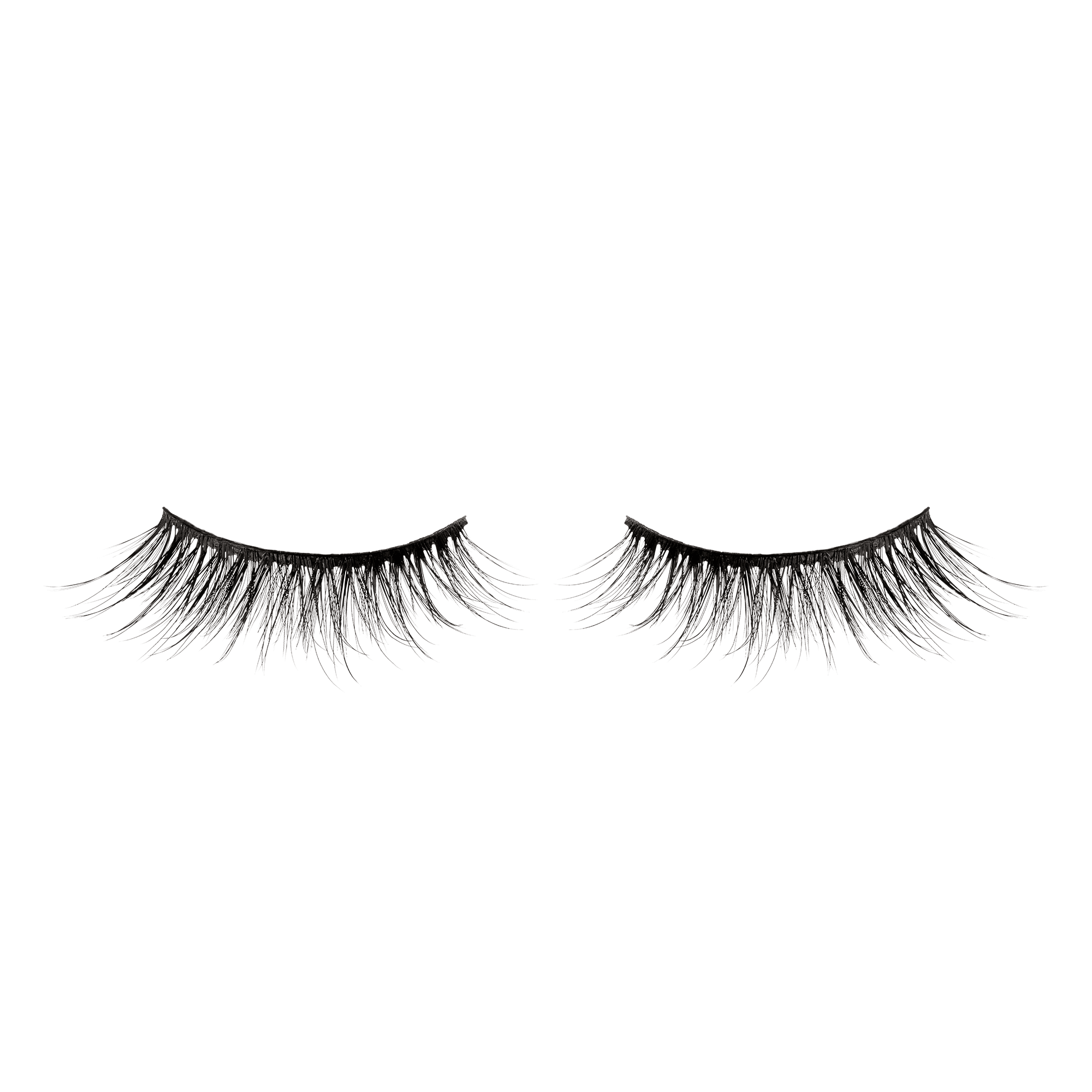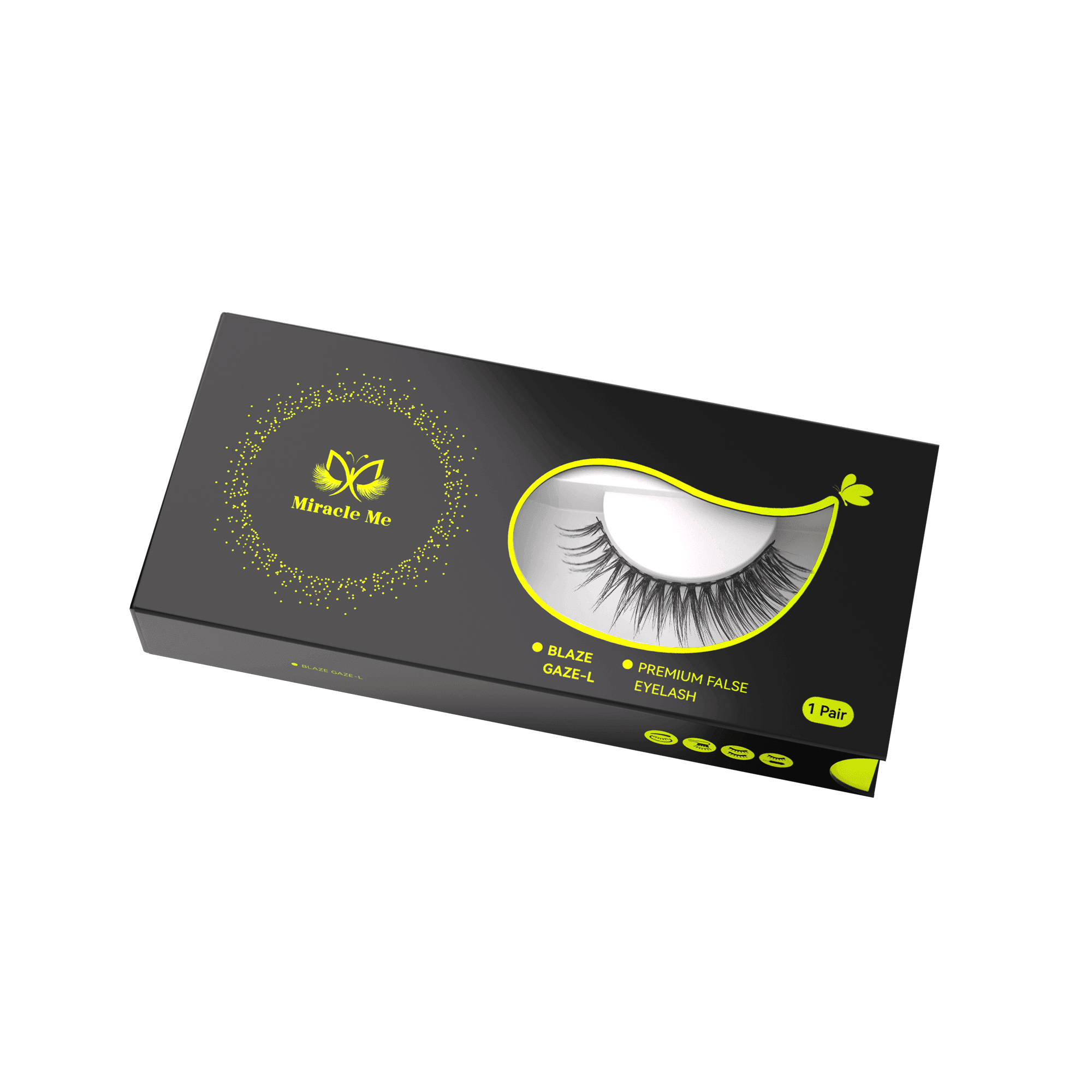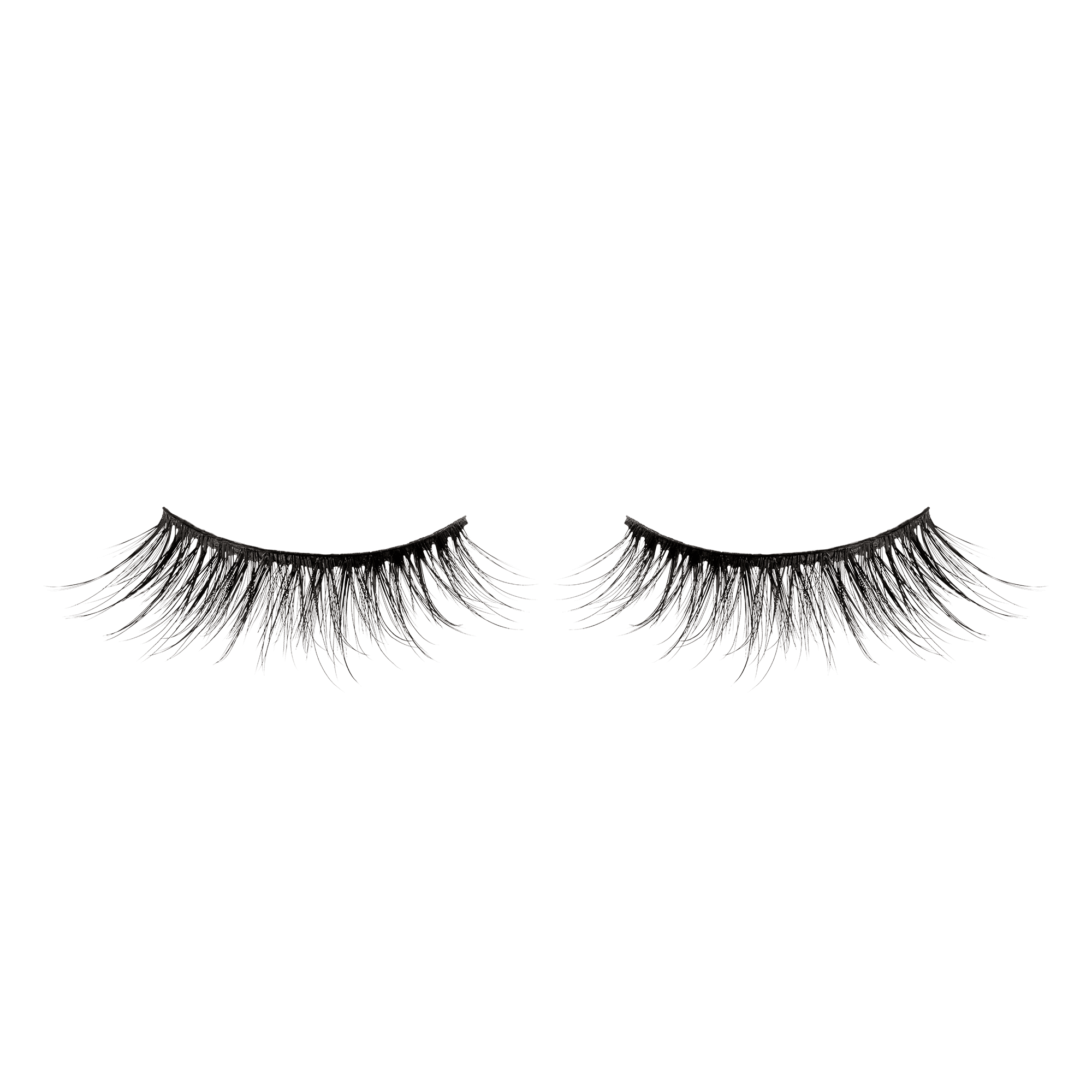False Eyelash Safety 101—Protect Your Eyes and Natural Lashes

You can wear false eyelashes safely if you follow easy steps. Always do a patch test first. Put a little glue on your wrist to see if you are allergic. Wash your hands and tools before you use them. This helps stop infections. Pick lashes that fit your eyes. Do not use products with strong or harmful ingredients. If your eyes turn red or feel sore, take off the lashes right away. Cosmetic safety testing and good labels help you pick safer products.
Key Takeaways
- Always wash your hands and tools before using false eyelashes. This helps stop infections.
- Try a patch test with new glue or lashes first. This checks if you have allergies before using them all the way.
- Put on and take off false eyelashes gently. This keeps your real lashes safe and stops damage.
- Look for signs like redness, itching, or pain. Take off the lashes right away if these things happen.
- Never sleep while wearing false eyelashes. Take breaks so your real lashes can rest.
False Eyelashes Risks

Image Source: unsplash
False eyelashes can change how you look. But you should know about the risks. You might get infections, allergies, lash loss, or irritation. These problems can happen if you use the wrong glue. They also happen if you put on lashes the wrong way. Lashes with harsh chemicals can also cause trouble.
Eye Infections
You can get an eye infection if things are not clean. Dirty hands, tools, or lashes can spread germs. Germs and dirt can get in your eyes when you put on lashes. Many people who use false eyelashes have itching, redness, or pain.
Here is a table that shows how often some symptoms happen:
| Symptom | Prevalence (%) | Number of Participants (n) |
| Itching | 38 | 152 |
| Lashes pulling out | 36 | 144 |
| Heavy eyelids | 34 | 136 |
| Red eyes | 34 | 136 |
| Grittiness/foreign body sensation | 32 | 128 |
| Tearing | 24 | 96 |
| Burning sensation | 24 | 96 |
| Pain on eyelids | 22 | 88 |
| Misdirected lashes | 10 | 40 |
| Eyelids swelling | 6 | 24 |
| Boil on eyelids | 4 | 16 |
| Discharge | 2 | 8 |

Tip: Wash your hands and tools before touching your eyes.
Allergic Reactions
Some glues and lash materials can cause allergies. You may see redness, swelling, or burns. Cyanoacrylate is a glue ingredient that can cause strong reactions. In 42 cases, about 76% of people had symptoms after using glue. Touching glue caused burns and eye problems for some people. Kids, beauticians, and women have higher risks.
| Aspect | Data / Findings |
| Total cases studied | 42 cases of exposure to nail/false eyelash glue (2007-2020) |
| Symptomatic patients | 76% (approx. 32 patients) showed symptoms ranging from mild to severe |
| Most dangerous component | Cyanoacrylate caused symptoms in 16 out of 22 exposed patients |
| Severe symptoms in dermal group | 7 patients had second-degree chemical burns, cutaneous erythema, and ocular symptoms |

Note: Always do a patch test before using new glue or lashes.
Lash Damage
False eyelashes can hurt your natural lashes if you use them too much. Pulling off lashes or using strong glue can make lashes break or fall out. Rubbing your eyes can also hurt your eyelids and lashes. Allergies and irritation from glue can make lash loss worse.
- Remove false eyelashes gently.
- Do not wear false eyelashes too often.
- Stay away from glues with harsh chemicals like formaldehyde.
Taking care of your natural lashes helps you use false eyelashes safely.
Application Safety

Image Source: pexels
Putting on false eyelashes the right way keeps your eyes safe. Each lash type needs its own way to put on. You should always keep things clean and test new products first. Here are ways to put on and take off different lashes without hurting your eyes.
Strip Lashes
Strip lashes are very popular. You can use them at home, but you need to be careful.
Step-by-step safe application:
- Wash your hands and face before you start.
- Take the strip lashes out of the box gently.
- Hold the strip to your eyelid and trim it if needed.
- Put a thin line of glue on the band. Wait for it to get sticky.
- Use tweezers or a lash tool to place the strip near your lash line.
- Press along the band to make it stay.
Tip: Always test the glue on your wrist before using it on your eyes.
Common mistakes to avoid:
- Too much glue can make your eyes hurt.
- Putting lashes on your skin instead of the lash line is wrong.
- Sleeping with strip lashes can cause infections.
Best practices:
- Pick medical-grade, hypoallergenic, and formaldehyde-free glue.
- Clean lashes with micellar water every few days.
- Clean your tools with 70% isopropyl alcohol once a week.
- Do not share your lashes or tools with anyone.
| Safety Concern | Cause/Factor | Recommended Safety Practice |
| Allergic Reactions | Adhesive chemicals (formaldehyde, latex) | Patch testing before full application |
| Eye Irritation | Improper application, low-quality adhesives | Use quality materials and proper technique |
| Infections | Poor hygiene, contaminated tools/adhesives | Wash hands, sanitize tools, clean lashes |
| Lash Damage | Heavy or poorly applied lashes | Trim lashes, avoid excess glue, remove gently |
Cluster Lashes
Cluster lashes come in small groups. You can use them to make your lashes look fuller.
Safe application steps:
- Wash your hands and eyelids.
- Use clean tweezers to pick up a cluster.
- Dip the base in a little glue.
- Place the cluster above your lashes, not on your skin.
- Leave space between clusters so your lashes do not get heavy.
Mistakes to avoid:
- Using too many clusters can make lashes fall out.
- Putting clusters on your eyelid skin is not safe.
- Using strong or unknown glue is risky.
Note: Cluster lashes can be heavy. Pick the right size and weight for your lashes to stop damage.
Aftercare:
- Brush your lashes gently two times a day.
- Do not use oil-based products near your eyes.
- Take breaks from cluster lashes so your natural lashes can rest.
Self-Adhesive Lashes
Self-adhesive lashes have glue on the band already. They are easy to use but you still need to be careful.
How to apply safely:
- Wash your hands and eyelids.
- Take the lash off the tray without touching the sticky part.
- Put the lash close to your lash line.
- Press gently to make it stick.
Safety tips:
- Only reuse self-adhesive lashes if the box says it is safe.
- Do not wear them for a long time, especially in hospitals or clinics.
- If your eyes turn red or swell, take the lashes off right away.
Alert: Studies show false eyelashes can have germs like Staphylococcus aureus and E. coli. Always keep your lashes clean and do not share them.
Extra precautions:
- Test the lashes on your skin before using them fully.
- Clean your eyelids and lashes every day with gentle, oil-free cleansers.
- Do not rub your eyes or press on the lashes.
Removal Tips
Taking off false eyelashes the right way keeps your lashes healthy.
Safe removal steps:
- Wash your hands.
- Use a water-based remover or gentle oil to loosen the glue.
- Peel off the lashes slowly from the outer corner.
- Never pull or tug at your lashes.
- Clean your eyelids and lashes after taking off the false lashes.
Aftercare:
- Brush your lashes to keep them neat.
- Do not use oil-based products if you want to put lashes back on soon.
- Dry your face with a soft towel.
- Take breaks from false eyelashes so your lashes can rest.
Tip: Do not sleep with false eyelashes on. This can make your lashes fall out and cause infections.
Common mistakes to avoid:
- Rubbing your eyes or pulling off lashes fast.
- Using harsh removers or alcohol-based products.
- Not paying attention to signs of irritation or infection.
Quick checklist for safe use:
- Always test new glue before using it.
- Keep your hands and tools clean.
- Pick good quality products.
- Take off lashes gently and care for your natural lashes.
Problem Signs
Irritation
You might feel irritation soon after putting on false eyelashes. Some signs are itching, burning, or heavy eyelids. Many people say it feels like something is in their eye. In one study, 84% of people had eye problems just one hour after getting eyelash extensions. The most common problem was feeling like something was stuck in the eye. This happened to almost 60% of users. Other signs are redness, pain, and swollen eyelids. If your eyes keep hurting, take off the lashes and clean your eyes.
If your eyelids hurt or look puffy, stop using lashes and let your eyes rest.
Infection
Eye infections can happen if bacteria get under the lash glue or on reused lashes. You may see redness, pain, discharge, or blurry vision. These signs mean you need to act fast. Infections like conjunctivitis and styes can start with mild pain but get worse quickly. Warm, wet spots under false eyelashes help bacteria grow. Sharing lashes or not cleaning them makes infection more likely. Doctors have seen people get swollen, sore eyelids and even mild cellulitis after using false lashes.
Watch for these signs of infection:
- Redness or swelling that spreads
- Yellow or green discharge
- Pain that gets worse
- Blurry vision
If you see these signs, go to a doctor right away.
Allergic Response
Allergic reactions can happen if you react to the glue or lash material. Signs are itching, redness, swelling, and sometimes blisters. About 2.5% of people tested for eyelash glue allergies had a reaction. Most eyelash glues have cyanoacrylates, which can cause allergies. Contact dermatitis affects up to 20% of people. If you have allergies, you have a higher risk. Always do a patch test before trying new products.
| Symptom | How Common? |
| Allergic reaction to glue | 2.4–2.5% of users |
| Contact dermatitis | 15–20% of people |
Take off false eyelashes right away if you see swelling or blisters. Get medical help if your symptoms are bad.
What To Do If Accidents Happen
Immediate Steps
If you notice a problem while using lashes, you need to act quickly. Taking the right steps can protect your eyes and help you heal faster. Here is what you should do:
- Stop the application right away if your eyes start to water a lot. This helps prevent glue from setting incorrectly.
- Use an adhesive remover carefully if glue gets stuck to your skin or eyelid tape.
- If glue or remover enters your eye, rinse your eye with clean water several times until the discomfort stops.
- Remove the lashes immediately if you see signs of an allergic reaction, such as swelling or burning.
- Wash any burn wounds with water and remove leftover glue or foreign objects. Avoid using cotton near the area because it can make burns worse.
- Irrigate your eye and eyelids with saline if the area around your eye is affected.
- Apply a lubricating or antibacterial ointment to protect your eye surface if needed.
- Record what happened and what you did. This helps if you need to see a doctor later.
If you feel pain, see swelling, or notice any discharge, do not wait. Quick action can prevent serious problems.
When to See a Doctor
Some symptoms mean you should get medical help right away. You should contact a doctor if you notice any of these:
- Itching of your eyelids that does not go away after one day
- Swelling or bruising around your eyelids
- Redness that spreads or gets worse
- Eyelid changes, such as turning outward or inward
- Any infection signs, like yellow or green discharge
- Blurry vision or pain that increases
- Any other unusual symptoms near your eyes
Doctors from the American Academy of Ophthalmology and the American Optometric Association recommend seeing a specialist if you have these symptoms. Early treatment can stop complications and protect your vision.
When in doubt, always choose safety and see a professional. Your eyes are too important to risk.
You can enjoy beautiful lashes and keep your eyes safe by following these tips:
- Always wash your hands and tools before use.
- Do a patch test with new glue.
- Remove lashes gently and never sleep in them.
- Watch for signs of irritation or infection.
Take care of your eyes first. If you notice any problems, act quickly. Safe use of false eyelashes lets you look great and feel confident.
FAQ
Can you reuse false eyelashes?
You can reuse false eyelashes if you clean them well after each use. Remove glue and store them in a clean case. Dirty lashes can cause eye problems.
How long can you wear false eyelashes?
You should wear false eyelashes for one day only. Take them off before you sleep. Long wear increases the risk of infection and lash loss.
What should you do if glue gets in your eye?
Rinse your eye with clean water right away. Do not rub your eye. If you feel pain or see redness, visit a doctor as soon as possible.
Are magnetic lashes safer than glue-on lashes?
Magnetic lashes do not use glue, so you avoid some allergies. You still need to keep them clean. Poor hygiene can still cause eye irritation or infection.

